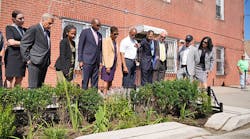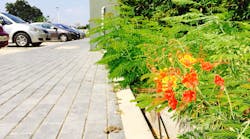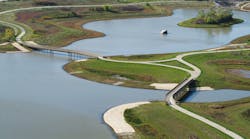SEATTLE, WA, Feb. 6, 2012 -- EPA has issued a proposed Municipal Stormwater discharge permit for Joint Base Lewis-McChord, the largest military installation on the West Coast. The permit, when final, is expected to help guide how stormwater is managed across nearly 142 square miles of base property over the next decade and beyond.
Stormwater is recognized as a major source of pollution to the Puget Sound. EPA's draft municipal separate storm sewer system (MS4) permit for JBLM, located just south of Tacoma, is the first such proposed permit for a military or other federal facility in western Washington. The draft permit requires specific actions and activities that must be accomplished over at least the next five years to protect local waters.
JBLM has been implementing a stormwater program for several years in anticipation of receiving a permit from EPA. Among the new requirements under the proposed permit, the base must control runoff from all construction sites; control runoff from all new development and redevelopment sites; map, inspect, and maintain the storm system, and engage JBLM employees and the community about preventing pollutants in stormwater runoff.
Due to its proximity to Puget Sound, the Base permit also requires:
* stormwater runoff from redevelopment and new projects must meet performance standards through use of Low Impact Development (LID) techniques and, if needed, traditional stormwater features (detention ponds);
* a new construction project threshold of 5,000 square feet or greater;
* a program to reduce runoff from the existing developed areas;
* a biological stream health monitoring program using aquatic insects in Clover and Murray Creeks.
EPA's proposed permit requires LID practices such as rain gardens, permeable pavement, native vegetation areas, and green roofs to avoid or lessen the reliance on traditional stormwater pipes and ponds. By using LID, a larger portion of rainfall will be intercepted, infiltrated, evaporated, or reused to avoid excess runoff. These actions will help maintain or restore a more natural stream flow throughout the year, replenish groundwater, and help protect fish and other aquatic organisms. It will also reduce the influx of pollutants washed into the streams, creeks and lakes on the base or into Puget Sound.
"JBLM plays a vital role in our national security and the regional economy," said Mike Bussell, Director of EPA's office of Water and Watersheds in Seattle. "So we designed this new permit to help them accomplish their mission of providing a safe, healthy community for those who serve our country, while reducing the storm water pollution threat to base streams, lakes and Puget Sound."
###


